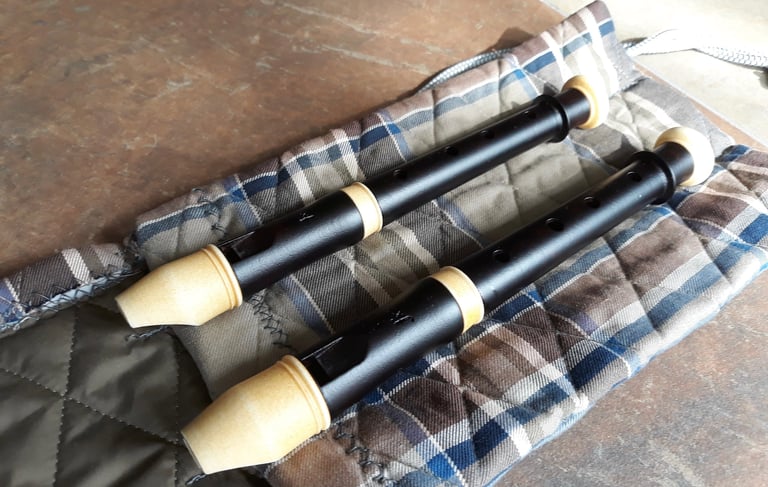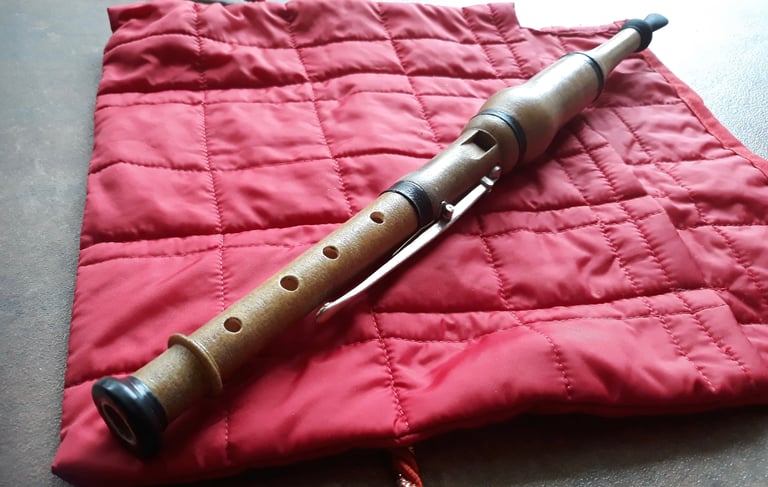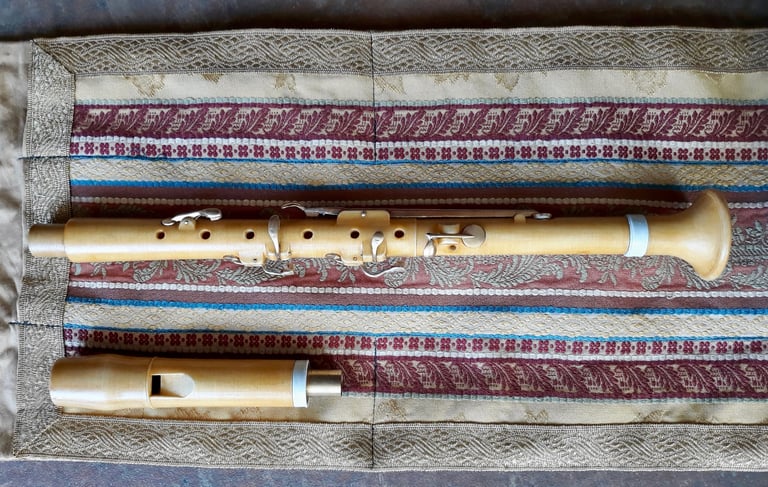Flageolets & Csakan
Baroque Flageolet in A or G
The baroque flageolet, a small duct flute popular in France during the 17th and early 18th centuries, is known for its sweet, clear tone. Our model is based on an anonymous French flageolet from the 17th century, featuring a recorder-like beak. Preserved in a private collection in Turin, we had the opportunity to study and measure it directly.
We offer two versions: one in A and another in G, available at both A=415 Hz (Baroque repertoire) and A=440 Hz (earlier music), ensuring flexibility across various performance contexts.


P. Noblet Romantic Flageolet in A
Our romantic flageolet is a reproduction of an instrument by Prudent Noblet, crafted in La Couture-Boussey, France, around 1860. The original, made of boxwood with black horn rings and a single piano key, is preserved in a private collection in France.
Our version is based on a 3D model reconstructed from a technical drawing, slightly scaled down for playability at A=440 Hz.
Widely used in 19th-century France to accompany dances in bands and ensembles, the romantic flageolet’s bright, projecting sound lends itself well also to its dedicated repertoire, such as Narcisse Bousquet’s captivating Études and Caprices.


S. Koch Csakan in Ab
The csakan, a duct flute originally developed in Vienna around 1800, can be considered a sort of “romantic recorder.” Typically pitched in Ab, it became popular in the first decades of the 19th century, inspiring a large dedicated repertoire that includes works by composers such as Ernest Krähmer, who wrote extensively for the instrument.
Our csakan is modeled after an instrument made by the renowned Viennese maker Stephan Koch around 1820. The original, preserved in the Musikinstrumenten-Museum, Berlin (No. 2829), is equipped with seven keys: low C# (sounding A4), Eb, F, F#, G#, Bb, and a C trill. We developed our model from technical drawings and have slightly scaled it to A=440 Hz.


